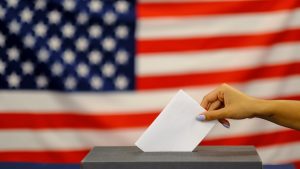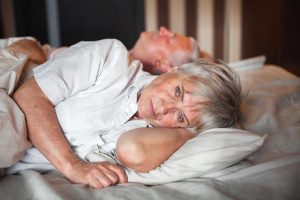AN ETHEREAL wisp of patchouli laced with cotton candy, she rides a motor-scooter and wears a beanie with knitted cat ears over her bangs.
She is the Manic Pixie Dream Girl, a unicorn fairy princess in a font of whimsical delights. This doesn’t even make sense. Oh, but that’s the brilliance of the MPDG.
The term “manic pixie dream girl” is credited to Nathan Rabin, who first used the term to describe the problematic archetype of free-spirited, “quirky” female characters on film. In the 2007 essay that spawned the term, Rabin described the Manic Pixie Dream Girl as “an all-or-nothing-proposition. Audiences either want to marry her instantly (despite The Manic Pixie Dream Girl being, you know, a fictional character) or they want to commit grievous bodily harm against them and their immediate family.” “Manic Pixie Dream Girl” has been used as a catch-all term for what Jezebel’s Tracy Moore calls a“bats**t/whimsical fairy lady,” a specific type of female character who floats into a male character’s apathy-filled life just in time to save him from an impending existential crisis, only to disappear just as mysteriously as she arrived. Along the way, she might blow him off repeatedly or be a general pain in the ass who can’t be counted on to show up on time, ever, but they probably still end up having sex because she’s usually just a hot girl with bangs.
Once she serves her purpose of catalyzing the male’s journey of growth and self-discovery, she’s gone forever. She has no story arc or agency of her own. She’s crazy but it’s ok, because, again, she’s hot. She’s new and exciting, and just plain weird. And had bangs. Did we mention the bangs? The male character might love her, or hate her, or both. Moore writes, “[She] represents every female character ever written by a man since the dawn of time who was whimsical, offbeat, “not like other girls,” ethereally sexy, bookish, different, unique, angular, f**ked up, bipolar, flirty[…]grab yourself a lollipop, an impish grin and slap on an obscure jaunty record — we are all Manic Pixie Dream Girls now.”
The most talked-about examples of the MPDG include Kirsten Dunst in Elizabethtown, Natalie Portman in Garden State, and Queen of Queens, High Mistress Of Whimsy Zooey Deschanel in an extensive body of work that, when compiled, could be accurately titled Just Bein’ Quirky. Deschanel, in particular, has so often been cited as a prime example and reigning queen of MPGDs that the term has lost its meaning entirely. Is Zooey Deschanel a Manic Pixie Dream Girl? Or is a Manic Pixie Dream Girl Zooey Deschanel? No one really knows, and consequently, the MPGD has become a stagnant trope and lost all meaning. Which may have been why Rabin felt compelled to apologize for coming up with this descriptor for whimsical female characters in the first place. “It’s an archetype,” he writes, “that taps into a particular male fantasy: of being saved from depression and ennui by a fantasy woman who sweeps in like a glittery breeze to save you from yourself, then disappears once her work is done.” Even sensitive guy Zach Braff admits, “I’ve always had this fantasy of being saved by a great woman, a powerful woman. I mean, yes[…]quirky and silly[…]maybe that’s just the type of woman I’m attracted to so I sort of wrote my dream girl[…]I’ve always loved this fantasy that I would be rescued and saved by a great, strong woman.” It appears Rabin realized that in naming the “fancifully if thinly conceived flibbertigibbet who has no reason to exist except to cheer up one miserable guy,” he created a monster, a misogynist cliche, and he’s really, really sorry.
It’s important to clarify that there is no such thing as a MPDG IRL (quirk!). The Manic Pixie Dream Girl is exactly what her name suggests: a fantasy and figment of a male imagination brought to life on film. Rabin confirms that the pervasiveness of this trope “shows what happens when a gifted writer-director lets his big ol’ heart do his brain’s work for him.” Manic Pixie Dream Girls are what happen when, instead of creating a complex and believable female-identified character with a dynamic arc independent of a male protagonist, a writer gets lazy and gives us the sensitive, arty guy’s fantasy woman: the strikingly attractive, unpredictable woman with a childlike love for life and the ability to bring him out of an antisocial cerebral funk. The sensitive hipster’s Kate Upton, if you will. It’s a tired-ass, masturbatory trope and it’s boring.
But just like the equally annoying “hot girl who’s one of the guys and burps and farts and plays video games, likes football, and eats massive amounts of junk food and beer while still looking conventionally hot” trope, the MPDG has festered and grown and effectively taken over pop culture to the point where we forget she’s just a figment of a lonely writer’s imagination. Even if you wanted to be one, you couldn’t. Even Zooey Deschanel isn’t a real MPDG. She’s quirky, sure, but why should “quirky” be designated to male-writer-speak for sexy fantasy girl? The MPDG trope has completely co-opted quirky female characters and turned them into fantasy sex mutants, devoid of depth and complexity. Can’t quirky just be quirky? After all, male writers didn’t invent quirk.
It’s time to reclaim it. Quirky female characters don’t need male characters to be interesting or meaningful.
We need dynamic female characters that are total weirdos and exist independently of male fantasy. There’s nothing wrong with being a manic pixie. It’s that “dream girl” that gets us in trouble.












-300x169.jpg)




